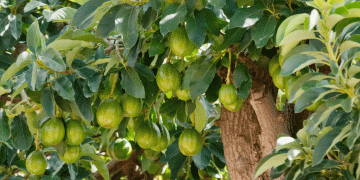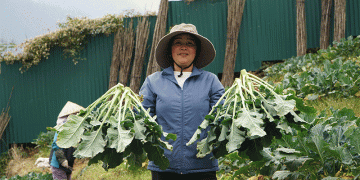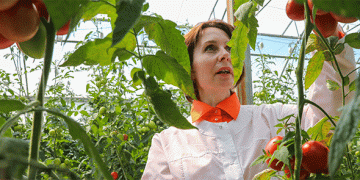In the first half of 2024, Peru exported 390,972 tons of fresh avocados, a 5% drop compared to the same period in 2023. Yet, despite this decline in volume, the export value climbed by 19% to a total of $788 million USD. The key driver behind this increase in value is the significant rise in average prices. The price per kilogram of Peruvian avocados rose by 26%, from $1.60 USD in 2023 to $2.02 USD in 2024.
This phenomenon isn’t isolated to Peru alone. Global avocado demand continues to grow, particularly in regions where consumers are increasingly incorporating healthy fats and nutrient-rich foods into their diets. But supply chain issues, weather challenges, and production costs have constrained supply, driving up prices in international markets.
Key Markets: A Mixed Picture
The Netherlands remains the largest destination for Peruvian avocados, accounting for 33% of total exports. While the volume of avocados shipped to the Netherlands dropped by 5% to 129,635 tons, the value of these exports increased by 22%, reaching $260.7 million USD. This increase in value is linked to a 29% rise in the average price, which climbed from $1.56 USD per kilogram in 2023 to $2.01 USD per kilogram in 2024.
Spain, another major destination for Peruvian avocados, showed positive growth in both volume and value. Spain imported 76,993 tons of avocados from Peru, a 2% increase compared to the previous year. More notably, the value of these imports soared by 32% to $157.3 million USD, driven by a 29% rise in the average price, which reached $2.04 USD per kilogram.
The United States, the third-largest market for Peruvian avocados, also demonstrated strong performance. Peru exported 45,262 tons of avocados to the U.S., marking a 12% increase in volume. The value of these exports climbed by 36% to $97.3 million USD, with the average price per kilogram rising by 22% to $2.15 USD.
Factors Behind the Price Surge
Several factors are contributing to the rising prices of Peruvian avocados in the global market:
- Supply Chain Disruptions: The ongoing challenges in global logistics, including higher shipping costs and port delays, have affected the supply chain for fresh produce. These disruptions have led to tighter supply in key markets, pushing prices higher.
- Climate and Production Conditions: Weather conditions in Peru and other avocado-producing regions have had an impact on yields. Adverse weather, including droughts and unseasonable temperatures, has reduced the overall volume of avocados available for export.
- Rising Production Costs: Input costs, including labor, fertilizers, and water management, have increased significantly in recent years. Farmers are facing higher expenses, which are being passed on to consumers in the form of higher prices for avocados.
- Strong Global Demand: Demand for avocados continues to grow, particularly in Europe and North America. Consumers are increasingly valuing avocados as a health food, rich in beneficial fats and nutrients, which is keeping demand strong even as prices rise.
Implications for Farmers and Exporters
For Peruvian avocado farmers, the current market dynamics present both challenges and opportunities. The rising prices are providing a welcome boost to revenue, especially in a context of declining volumes. However, the situation also highlights the need for strategic planning and innovation.
- Investing in Sustainability: As climate challenges intensify, investing in sustainable farming practices—such as improved water management, soil health, and pest control—will be critical for maintaining yields and minimizing environmental impacts.
- Diversifying Export Markets: While Europe and North America remain key markets, exploring emerging markets in Asia and the Middle East could help Peruvian avocado producers reduce their reliance on traditional markets and tap into new areas of growth.
- Improving Supply Chain Efficiency: Addressing supply chain inefficiencies and reducing transportation costs can help offset some of the rising production expenses. Collaborating with logistics providers to streamline operations will be vital for maintaining competitiveness.
The Peruvian avocado industry’s performance in the first half of 2024 highlights the complexities of the global agricultural market. While export volumes have decreased, rising prices have more than compensated for this decline, leading to increased revenue for Peruvian farmers. As global demand for avocados continues to grow, maintaining a focus on sustainable practices, market diversification, and supply chain efficiency will be crucial for long-term success.































